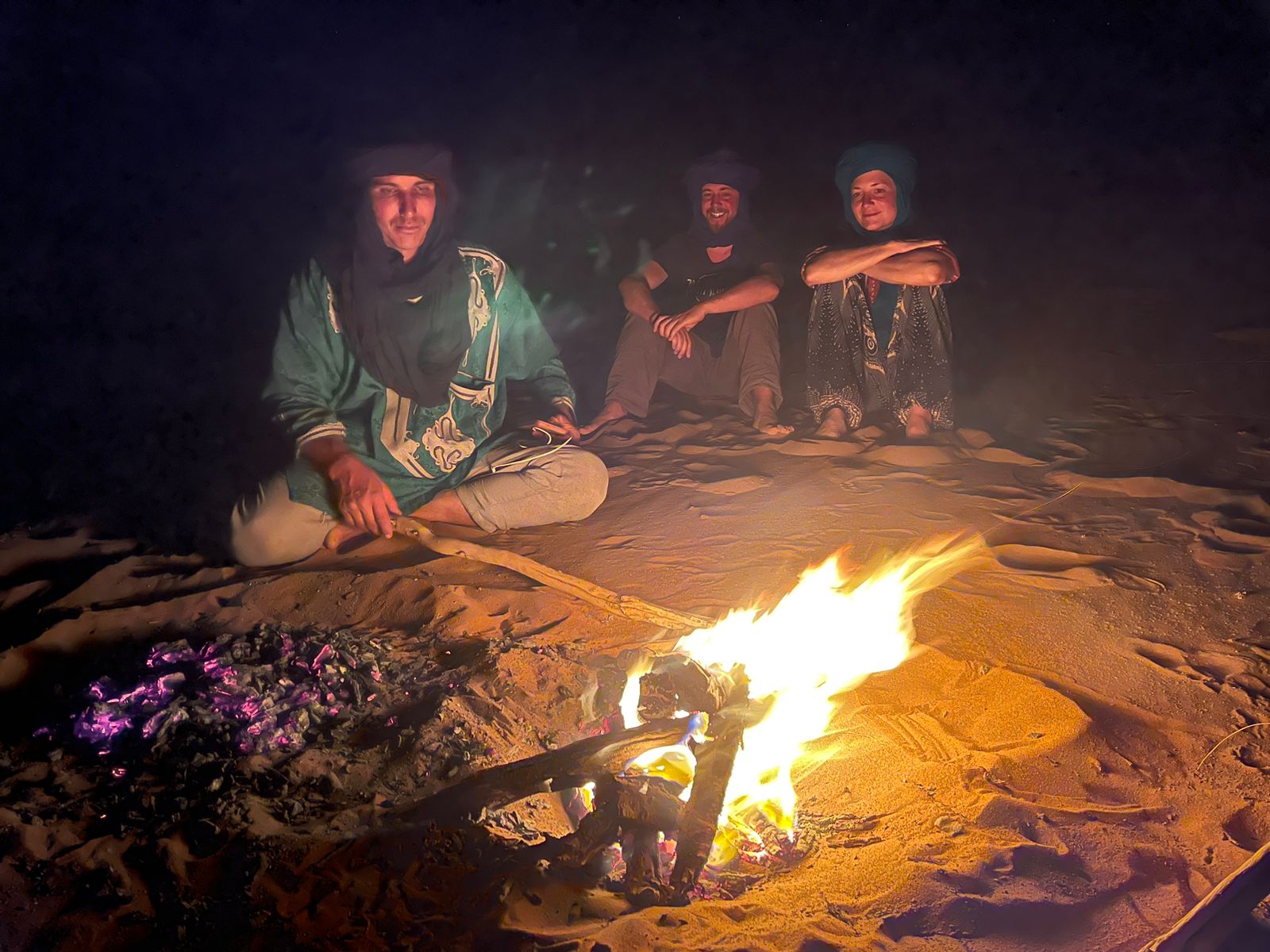Morocco, known for its vibrant culture and diverse landscapes, is home to a unique group of people the indigenous nomads of the Sahara. These nomadic communities have roamed the Moroccan Sahara for centuries. Embracing a way of life that is deeply connected to the vast desert wilderness. Embarking on a journey with them offers a remarkable opportunity to gain insight into their traditions, customs, and the beauty of their ancestral lands.
The Mystique of the Moroccan Sahara
The Moroccan Sahara, a place of stark beauty and enchantment, is a destination that captures the imagination of travelers worldwide. With its endless stretches of golden sand dunes, towering rock formations, and remote oasis wonderlands, the Sahara holds an air of mystique that beckons the adventurous at heart. Exploring this ethereal landscape and delving into its secrets is an experience that promises to leave a lasting impression.
The Essence of Immersive Travel Experiences
Immersive travel experiences have become increasingly popular amongst modern-day adventurers seeking authentic connections with different cultures and environments. By diving deep into the heart of a destination, travelers can go beyond the typical tourist experience and gain a profound understanding of the people and places they encounter. An immersive journey with Moroccan indigenous nomads is an opportunity to engage with a centuries-old way of life and forge meaningful connections in the process.
Preparing for the Nomadic Journey
The Rich Cultural Heritage of Indigenous Nomads
- Traditions and Customs: A Glimpse into Nomadic Life
The indigenous nomads of Morocco have a rich tapestry of traditions and customs that have been passed down through generations. From intricate weaving techniques to vibrant musical traditions, the nomadic communities offer a glimpse into a vanishing way of life. Engaging with these traditions allows for a deeper understanding of their cultural heritage and the challenges they face in preserving it.
- Authentic Interactions: Bridging the Cultural Divide
Being prepared for an immersive journey means approaching interactions with respect, curiosity, and an open mind. By engaging in genuine conversations, sharing stories, and participating in daily activities, travelers can bridge the cultural divide and foster connections that go beyond surface-level encounters. These authentic interactions create a space for mutual understanding, empathy, and appreciation.
- Preserving Nomadic Heritage: Sustainability Initiatives
Recognizing the value of nomadic heritage and the need for its preservation, various sustainability initiatives have emerged. These initiatives strive to support nomadic communities through education, cultural preservation, and sustainable development projects. By actively participating in and supporting these initiatives, travelers can contribute to the preservation of nomadic heritage for future generations.
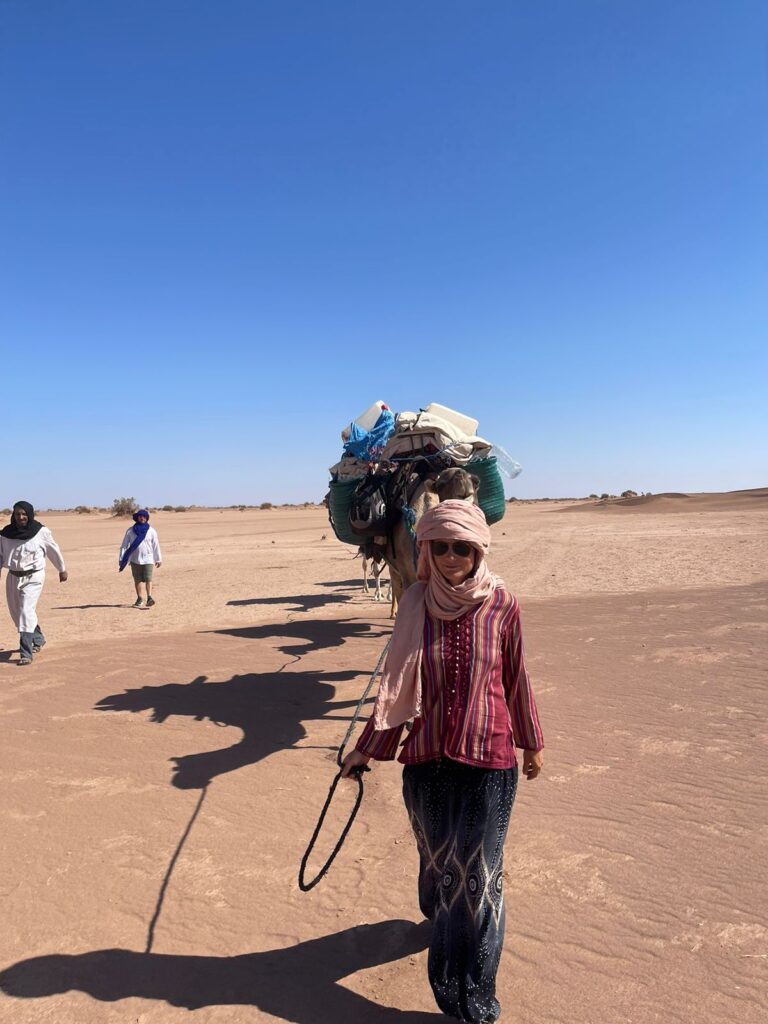

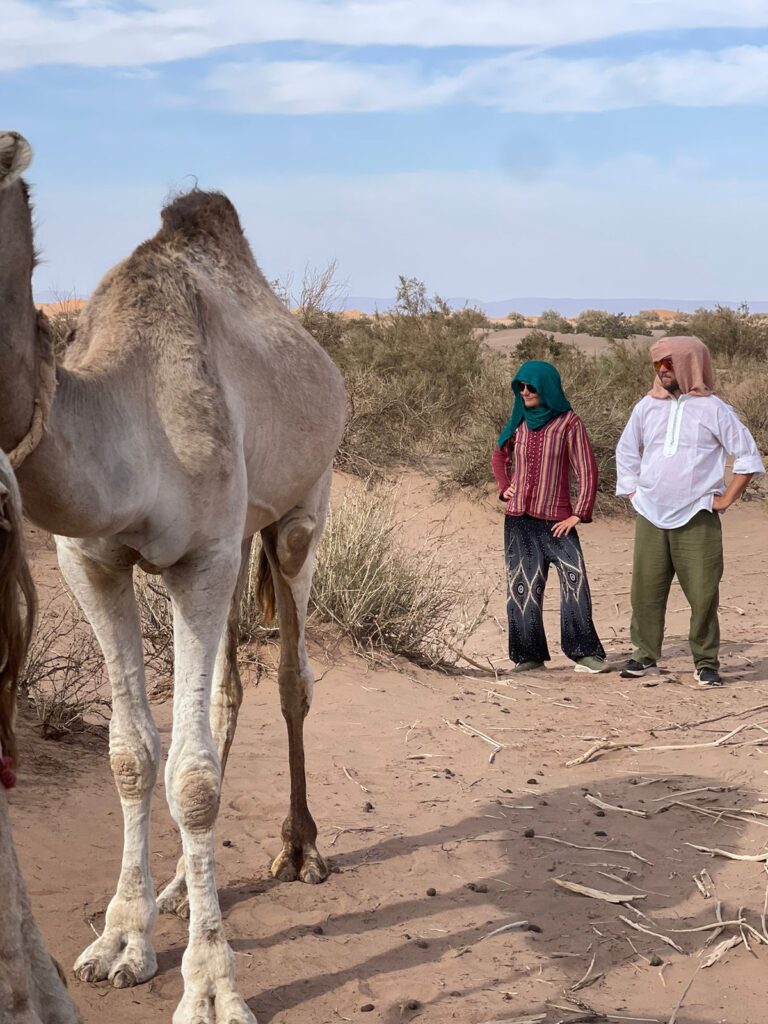
The Adventure Begins: Traversing the Moroccan Sahara
Following the Footsteps of Nomadic Tribes
- Tracking Indigenous Routes: Insights into Historical Trails
Embarking on a journey with Moroccan indigenous nomads allows travelers to delve into the historic routes and trails that these communities have traversed for centuries. Following in their footsteps unveils a deeper understanding of the nomadic lifestyle and the challenges they faced while navigating the complex terrain of the Sahara. These ancestral routes provide a glimpse into the past and offer unique insights into the nomadic way of life.
- Navigating the Vast Sand Dunes
The Moroccan Sahara is known for its magnificent sand dunes, offering a terrain that is both challenging and awe-inspiring. Traversing these vast expanses of sand, with their shifting contours and mesmerizing beauty, creates unforgettable experiences. Walking barefoot on the soft sands, feeling the grains between your toes, and witnessing the ever-changing play of light and shadow on the dunes is a sensory delight.
- Wildlife Encounters: A Window into Sahara’s Biodiversity
The Moroccan Sahara is not just a landscape of sand; it teems with a surprising array of desert-adapted wildlife. From graceful gazelles to elusive desert foxes, travelers may have the fortune of encountering these majestic creatures in their natural habitat. These wildlife encounters offer a window into the Sahara’s unique biodiversity and highlight the importance of conservation efforts to preserve these fragile ecosystems.

Embracing Nomadic Lifestyle
- Staying in Traditional Nomadic Camps
To fully immerse oneself in the nomadic lifestyle of the Moroccan Sahara, staying in traditional nomadic camps is a must. These camps, made from locally sourced materials, provide comfortable accommodation while maintaining an authentic nomadic ambiance. Sleeping under a canopy of starlit skies, lulled by the silence of the desert, creates a sense of tranquility and connection with nature.
- Participating in Daily Nomadic Activities
Participating in daily nomadic activities offers a hands-on experience of the nomadic way of life. Learning traditional weaving techniques, participating in camel caravan journeys, and assisting with camp chores provide insights into the practical skills and daily routines that sustain these nomadic communities. It’s an opportunity to learn from the elders, who carry a wealth of wisdom and knowledge passed down through generations.
- Relishing Indigenous Cuisines and Culinary Traditions
Indigenous nomads of the Sahara have mastered the art of preparing nourishing meals using limited resources. Savoring their indigenous cuisines, which feature aromatic spices, stews slow-cooked in clay pots, and flatbreads baked in sand ovens, is a culinary delight. Gathering around a communal meal, sharing stories and sipping traditional mint tea creates a sense of camaraderie and connection with the nomadic community.
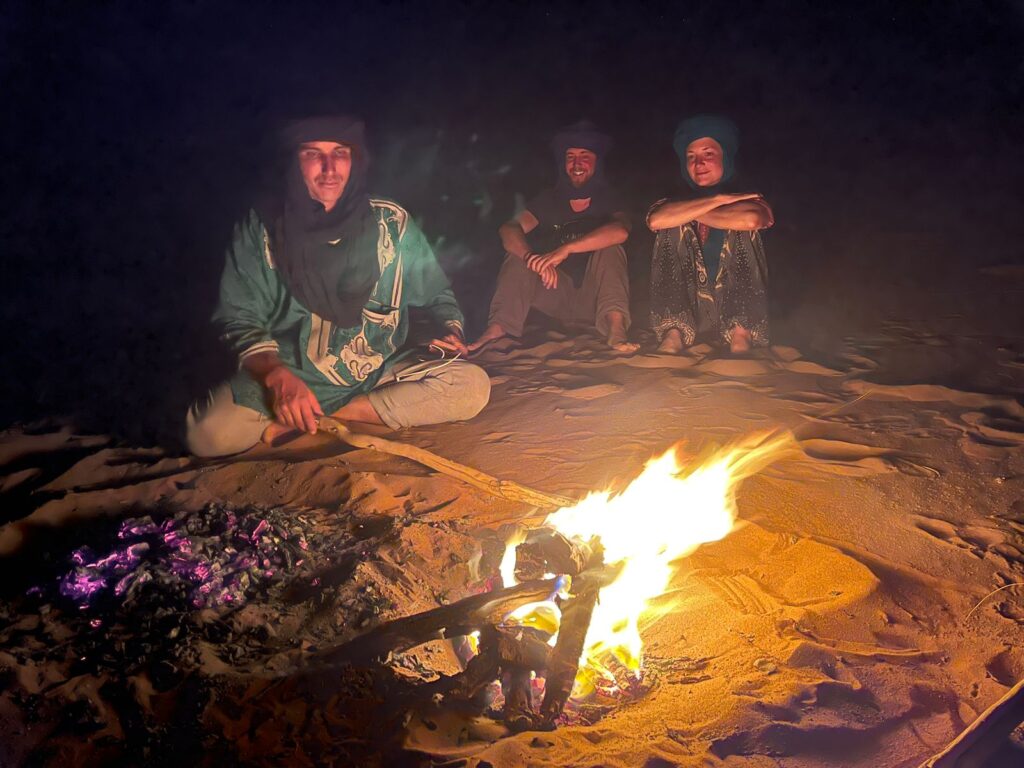
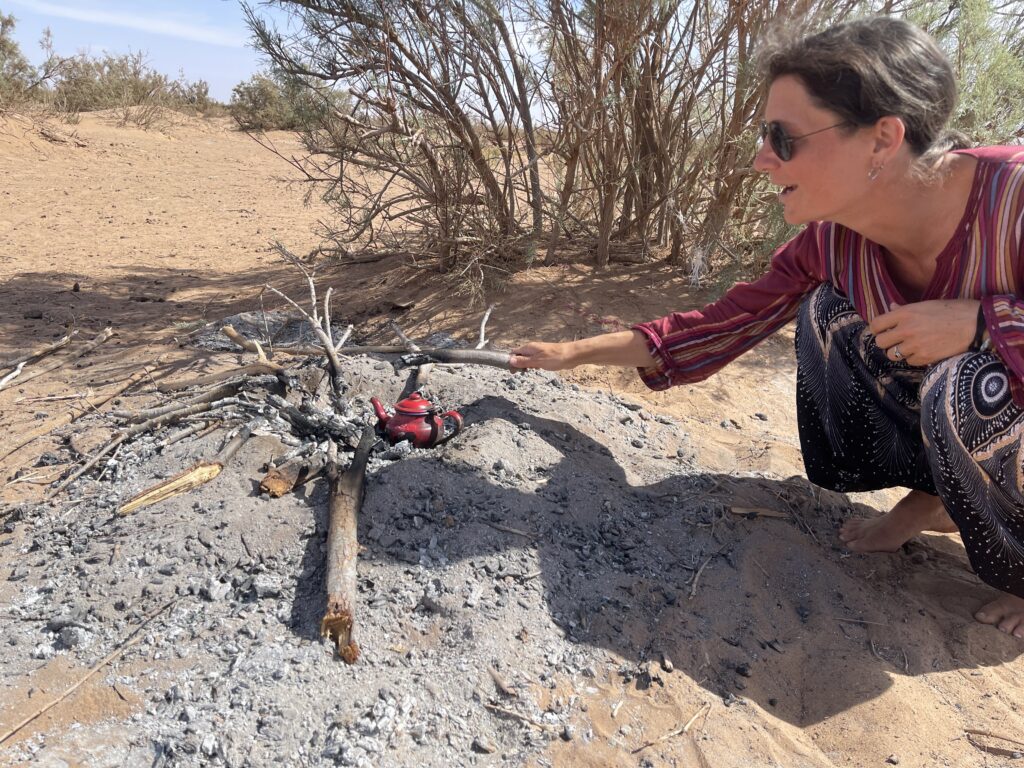
Discovering Hidden Gems of the Moroccan Sahara
- Ancient Rock Formations and Fossils: Geological Wonders
The Moroccan Sahara is a treasure trove of geological wonders, with ancient rock formations and fossils dating back millions of years. Exploring these natural wonders unveils the fascinating history of the Sahara’s formation and evolution. From towering cliffs carved by wind and water to the intricate patterns of fossilized marine life, each discovery tells a story of our planet’s ancient past.
- Oasis Wonderlands: A Miraculous Respite
Oases, verdant pockets of life in the arid desert, provide a respite from the vast expanse of sand. These hidden gems offer a contrast to the barren landscape, with lush palm groves, freshwater springs, and thriving ecosystems. Relaxing in the shade of palm trees, dipping into cool natural pools, and relishing the abundance of plant and animal life creates a sense of wonder and appreciation for the Sahara’s hidden treasures.
- Desert Nights: Gazing at the Starlit Skies
One of the most awe-inspiring experiences of exploring the Moroccan Sahara is gazing at the starlit skies from the heart of the desert. With minimal light pollution, the Sahara offers a pristine canvas for stargazing enthusiasts. The sight of countless stars twinkling above, the constellations telling ancient stories. And the occasional glimpse of a shooting star create a sense of wonder and awe, igniting a connection to the vastness of the universe.
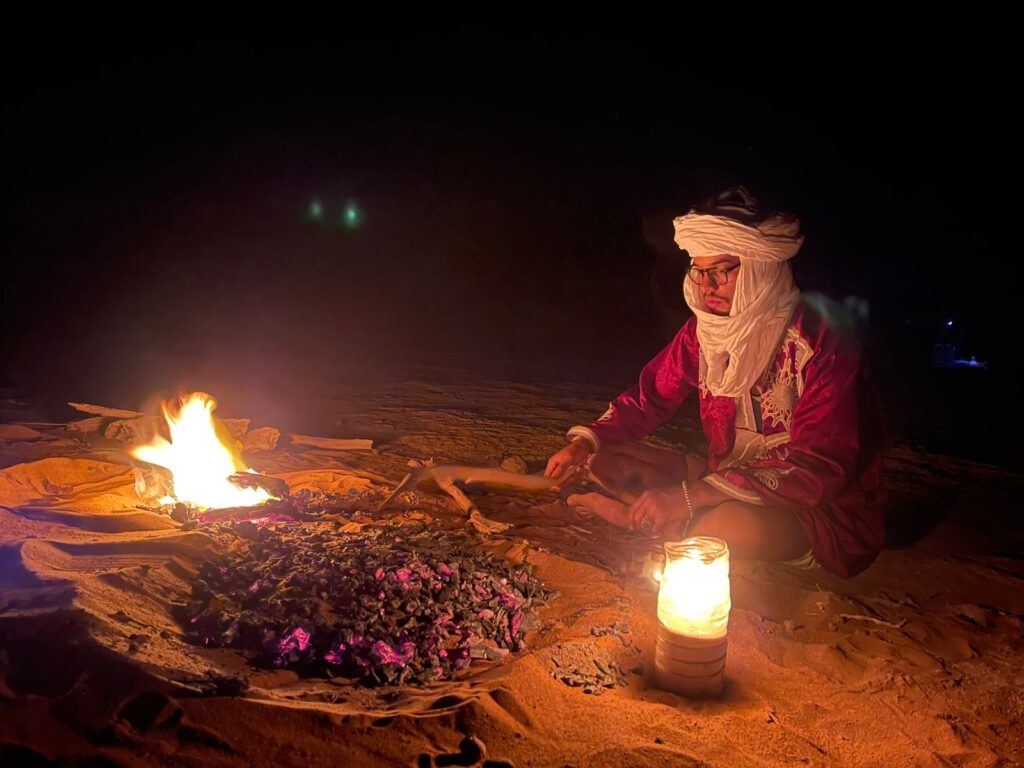
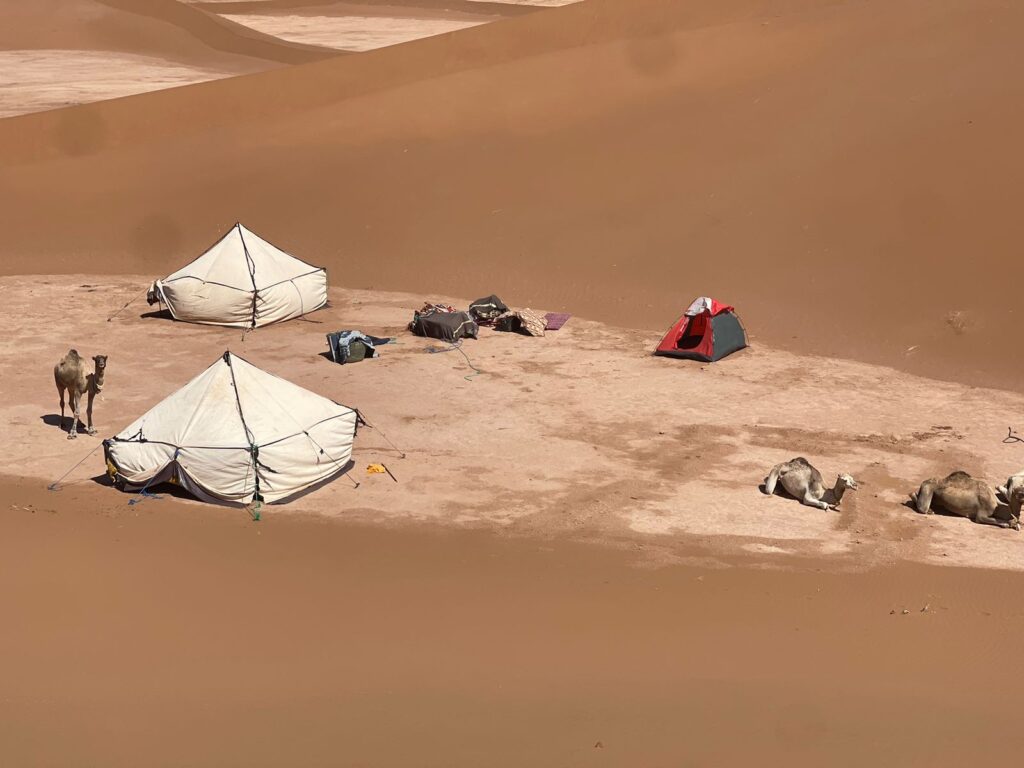
Interactions with Indigenous Nomads
Immersed in Cultural Exchange
- Building Bridges of Understanding
Interacting with indigenous nomads in the Moroccan Sahara is an opportunity to build bridges of understanding between different cultures. By approaching these encounters with respect, curiosity, and open-mindedness, travelers can foster meaningful connections and dismantle stereotypes. Engaging in dialogue, sharing stories, and embracing differences can lead to a deeper appreciation of our shared humanity.
- Sharing Stories and Traditions
One of the most powerful ways to connect with indigenous nomads of the Sahara is through the sharing of stories and traditions. By actively listening and engaging in storytelling sessions. Travelers can gain insights into the nomadic way of life, their struggles, triumphs, and aspirations. These stories serve as a reminder of the universal human experiences that transcend cultural boundaries.
- Fostering Respectful Relationships
Respect is at the heart of meaningful cultural exchange. By acknowledging and honoring the nomads’ cultural heritage, traditions, and way of life, travelers can foster respectful relationships. Recognizing the mutual benefits of these encounters and approaching them with humility and gratitude creates a foundation for authentic and long-lasting connections.
Education and Empowerment
Preserving Nomadic Heritage
- Supporting Nomadic Cultural Institutions
Nomadic cultural institutions play a pivotal role in preserving and promoting nomadic heritage. By supporting these institutions through financial contributions or volunteering, travelers can help facilitate the transmission of cultural knowledge, traditions, and craftsmanship to future generations. Investing in the preservation of nomadic cultural institutions ensures the vitality and continuity of these unique cultural practices.
- Revitalizing Traditional Crafts: Balancing Tradition and Modernity
Traditional crafts, such as weaving, pottery, and metalwork, are integral to nomadic cultural heritage. Supporting artisans and craft communities by purchasing their handmade products helps preserve these ancient techniques and provides economic opportunities for nomadic families. The challenge lies in striking a balance between preserving tradition and embracing innovation to ensure the sustainability and market relevance of these crafts.
- Promoting Nomadic Tourism: Opportunities and Challenges
Nomadic tourism offers opportunities for sustainable economic development within nomadic communities. By promoting responsible and respectful tourism practices, travelers can contribute to the economic well-being of these communities. While minimizing the negative impact on their traditional way of life. Engaging in community-led tourism initiatives, guided by the principles of sustainability and cultural preservation. Helps ensure the longevity of nomadic tourism as a viable livelihood option.
Summary and FAQs
Embarking on an immersive journey with Moroccan indigenous nomads of the Sahara. Offers a profound exploration of their way of life and the captivating beauty of the Moroccan Sahara. It provides an opportunity to connect with ancient traditions, witness extraordinary landscapes, and foster genuine relationships with the nomadic communities. By being prepared, open-minded, and respectful, travelers can experience the Sahara. In a way that goes beyond the ordinary and embrace an adventure of a lifetime.
Frequently Asked Questions (FAQs)
- How long is the typical trek through the Moroccan Sahara?
The duration of a trek through the Moroccan Sahara can vary depending on the chosen itinerary and personal preferences. It can range from a few days to several weeks, allowing travelers to tailor their experience to their desired level of immersion and exploration.
- What is the best time of year to embark on a nomadic journey in Morocco?
The best time to venture on a nomadic journey in Morocco is during the cooler months. Generally from October to April. Temperatures during this time range from pleasant to mild, making it more comfortable for trekking and outdoor activities in the Sahara.
- Is it necessary to have prior desert trekking experience?
Prior desert trekking experience is not necessary to embark on a nomadic journey in Morocco. However, a reasonable level of fitness, adaptability, and openness to new experiences is recommended. To fully enjoy and appreciate the challenges and rewards of the journey.


